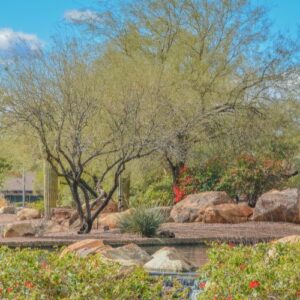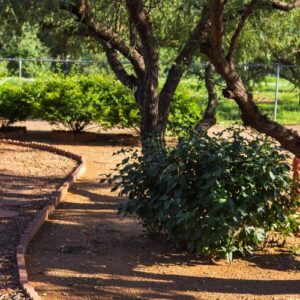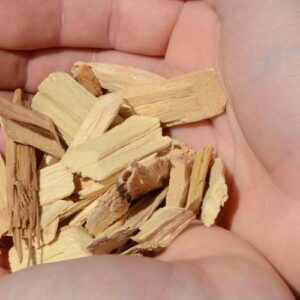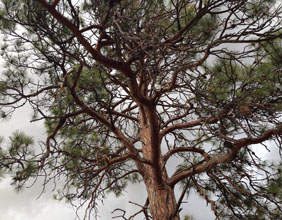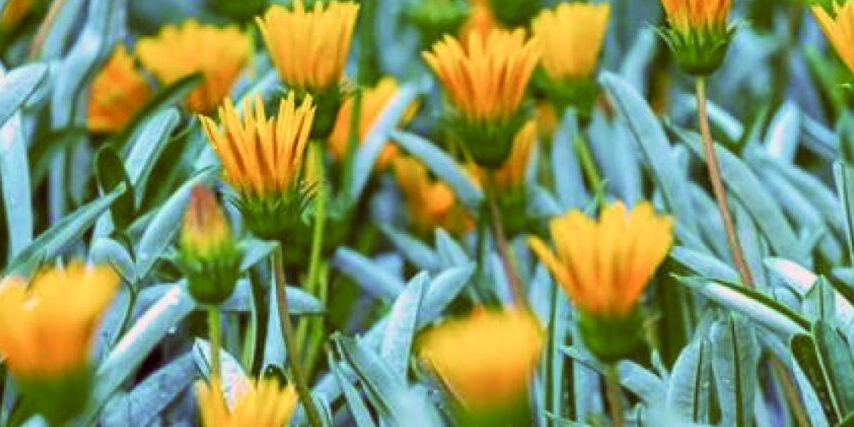
As temperatures warm up in the low desert, trees and shrubs begin to grow more quickly or start adding leaves, flowers and fruit. Many trees and shrubs need extra energy for this spring growth. And that’s where liquid fertilizers can help.
Use Fertilizers to Replenish Nutrients
The dry heat of the low desert combines with high salt/mineral content in the water to deplete nutrients from the soil that supports your landscape plants. Much like how we need vitamins and nutrients to thrive, our landscape plants need a boost when resources run low in the soil, and even more so when the plants are growing, greening or producing flowers and fruit.
Most fertilizers have a balance of the macronutrients nitrogen (N), phosphorous (P) and potassium (K) to help provide complete nutrition for your plants. Locally available products also can have nutrients that are often lacking in low-desert conditions, or extra secondary nutrients for certain plants we grow here, such as fertilizer high in iron and nitrogen for citrus trees. Other examples include liquid fertilizer with magnesium to help ensure healthy palm trees, and liquid iron to help minimize yellowing of leaves from iron deficiency.
Organic liquid fertilizers can contain other secondary but important nutrients that help improve plant health and even enhance soil texture and drainage.
See our article about fertilizing trees in the Phoenix metro area for more information.
Why Use a Liquid Fertilizer?
Fertilizers generally come in granular or liquid form. Both have their pros and cons. Below are the benefits of using a liquid fertilizer.
- Liquid formulas dissolve or mix with water more quickly than solid granules, easily penetrating the soil and providing a more rapid infusion of nutrients for your plants.
- Liquid fertilizers usually come as a concentrate that you mix with water, saving storage space and making them easier to apply (just be sure to follow the package directions when mixing the concentrate – too much fertilizer will “burn” your plants).
- Mixing the fertilizer with water means you moisten the soil as you go, which helps the soil absorb the nutrients and saves time for you or your landscape professional by watering and fertilizing in one step.
- Liquid fertilizer also is flexible in how you apply it: you can apply it through your irrigation system, with a hose-end sprayer, as a soil drench, or sprayed directly on the plant’s foliage.
Why Fertilize in Spring?
Fertilizing in spring supports new growth and flower or fruit production. It also means you replenish nutrients in the soil and your plants before the high heat of summer kicks in.
You don’t want to wait until it’s hot and your plants look tired to add liquid fertilizer. If you fertilize when it’s hot, the fertilizer stimulates growth at a time when trees, shrubs or grasses need all the energy they can muster to stay cool and hydrated.
Timing of fertilizing and the type of liquid fertilizer you use will vary, depending on the tree or shrub. For example, there are three times a year when it is good to feed your citrus trees, including February/March and May/June. The other time is late fall, after temperatures cool below 100 degrees. If you have a special liquid fertilizer for roses, be sure to apply it while the plants are blooming so they have plenty of energy.
On the other hand, some native plants need little to no fertilizer; they’ve adapted to the local soil conditions so fertilization would cause unwanted growth, increased water needs and decreased hardiness.
To make sure you apply the best possible liquid fertilizer to your landscape, use a local landscaping professional (Titan Tree is a division of Titan Landscape Services which is a full service landscape company) or buy fertilizers at local nurseries – both are more likely to provide fertilizers specifically designed for our unique climate and the trees and shrubs in your yard that need the most boost.
See Our Latest Articles
More Articles Like This

Titan Tree Care is a full-service tree care company located in Anthem, AZ and serving all of North Phoenix. We offer a wide range of services to meet your tree care needs, including tree and palm trimming, tree pruning, tree removal, stump grinding, and more. We also offer insect or disease treatments and fertilization services. We are dedicated to providing high-quality, safe, and effective tree care services to our customers and work hard to ensure that your trees are healthy and look their best.



